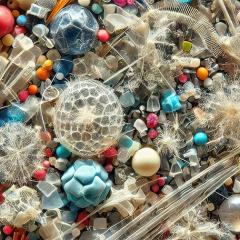Assessing the abundance and fate of antifouling paint particles in the marine environment
Antifouling paints are extensively applied to the hull of boats to prevent the growth and development of aquatic organisms, such as barnacles and mollusks. However, these paints contain toxic chemicals called biocides, which could negatively impact the environment. Quantifying small antifouling paint particles (APPs) that are released from boats during maintenance or navigation has proven to be very challenging. In order to overcome the limitations of previous investigations, the current project aims to develop an analytical method using pyrolysis-gas chromatography-mass spectrometry to quantify the smallest APPs in the marine environment, with a particular focus on Australian marinas and their vicinity. The outcomes of the present project will not only lay the groundwork for the application of chemical-analytical techniques in APP research but also provide a baseline of the current state of APP pollution in Australia and future directions for industry and policy regulators to achieve a sustainable future.
Please note this is a PhD student's Progress Review presentation.

